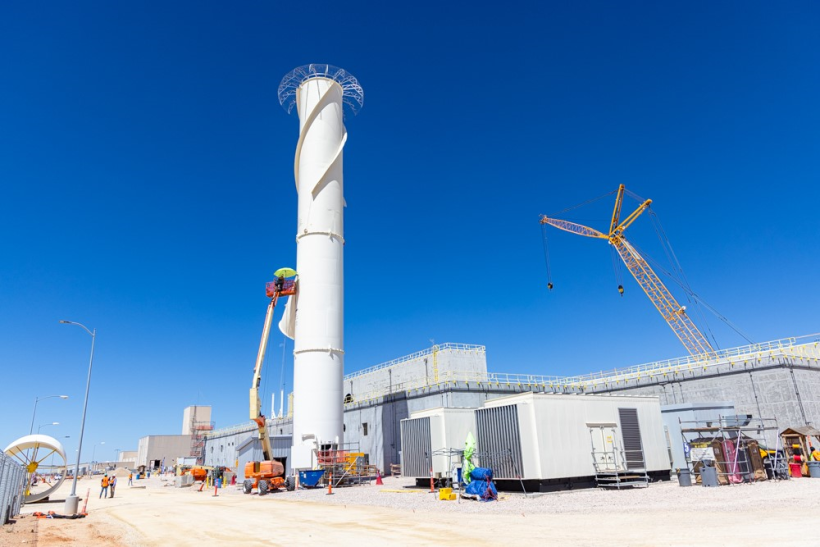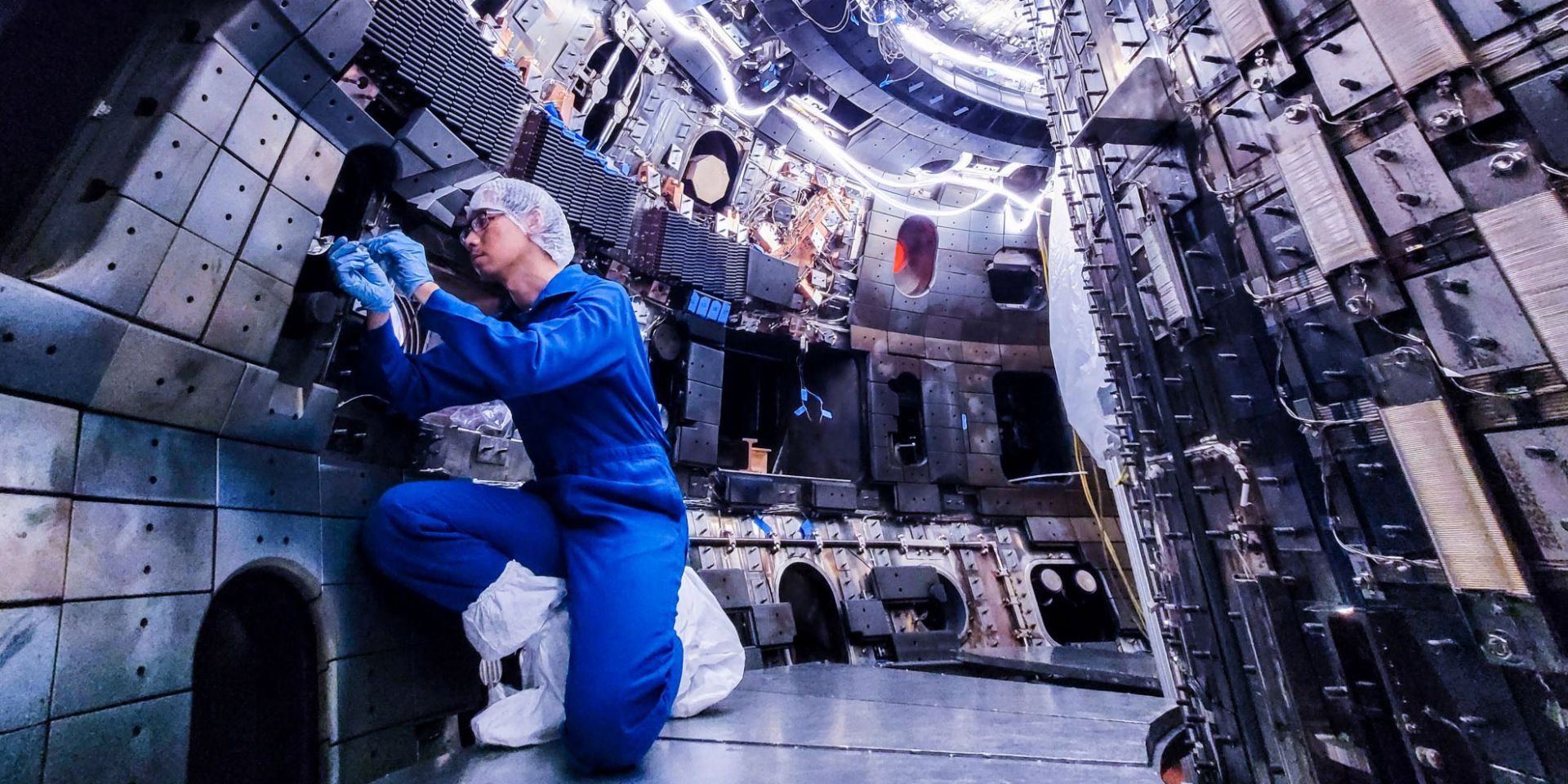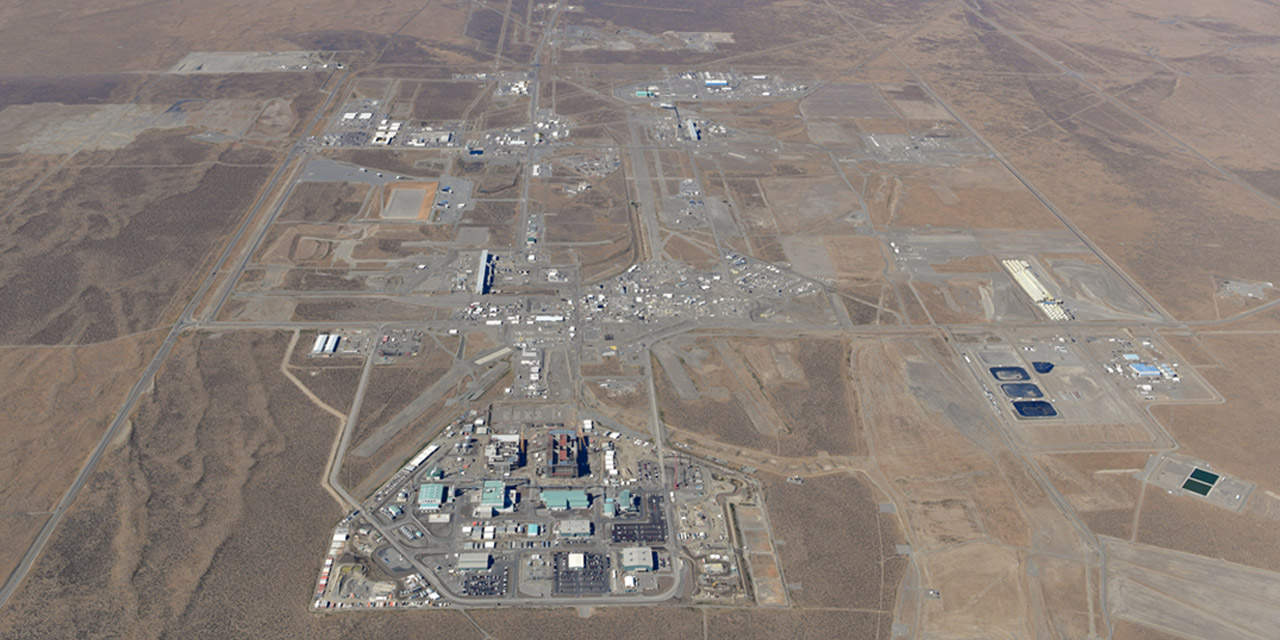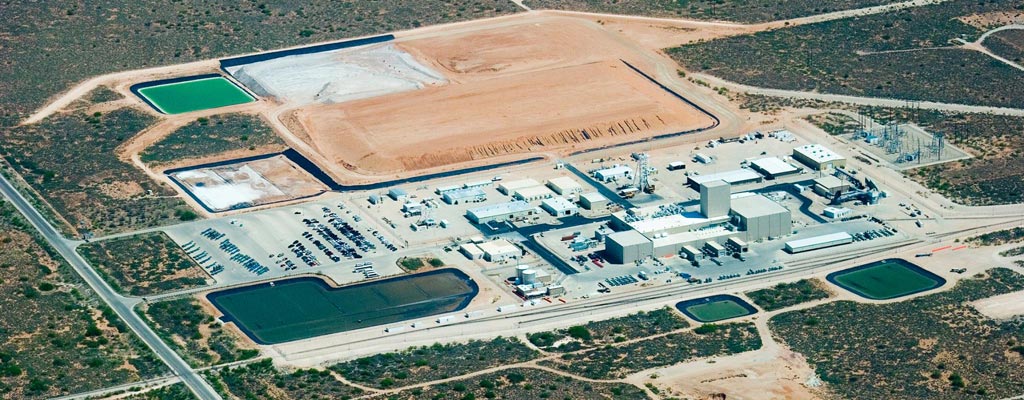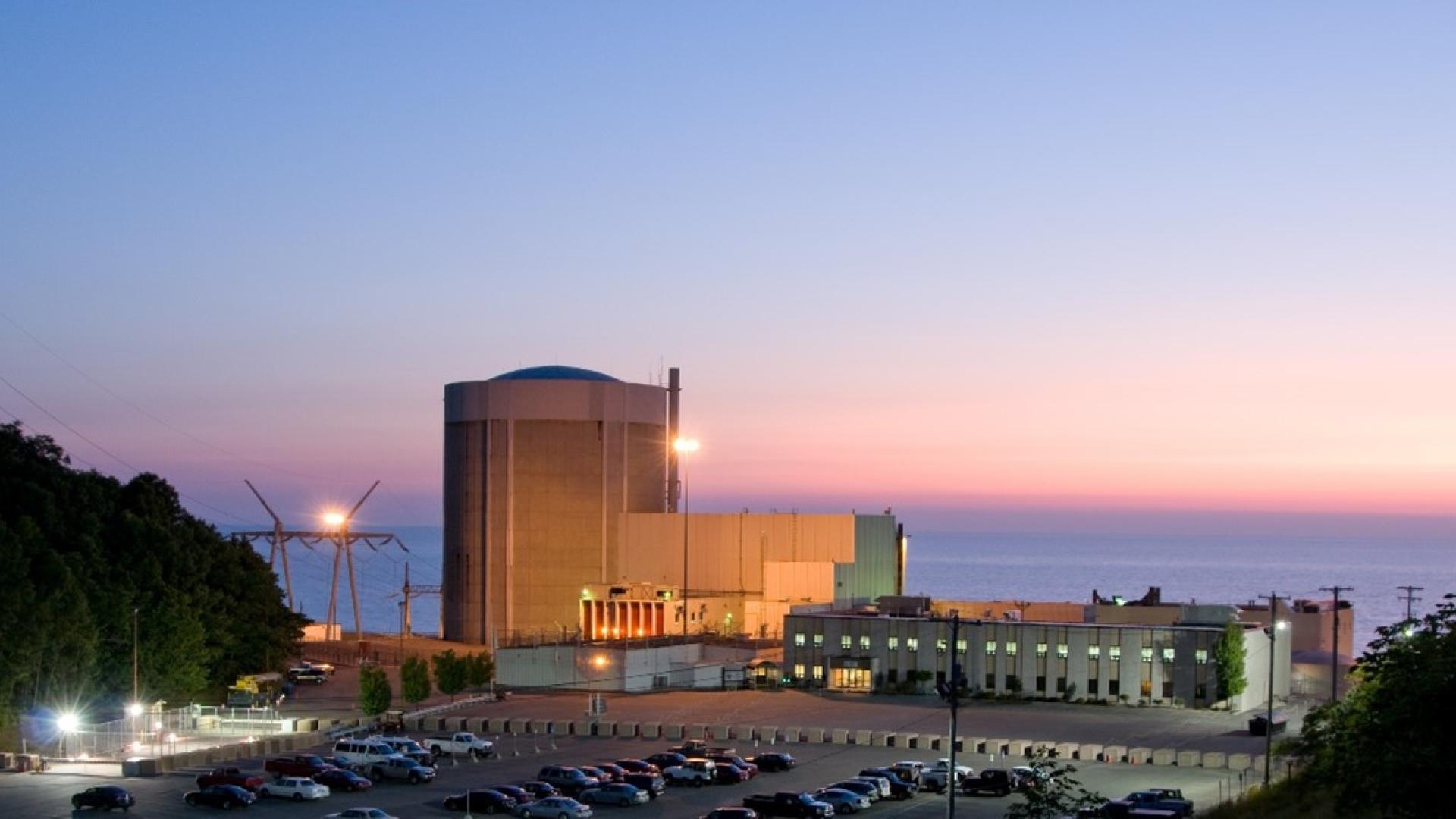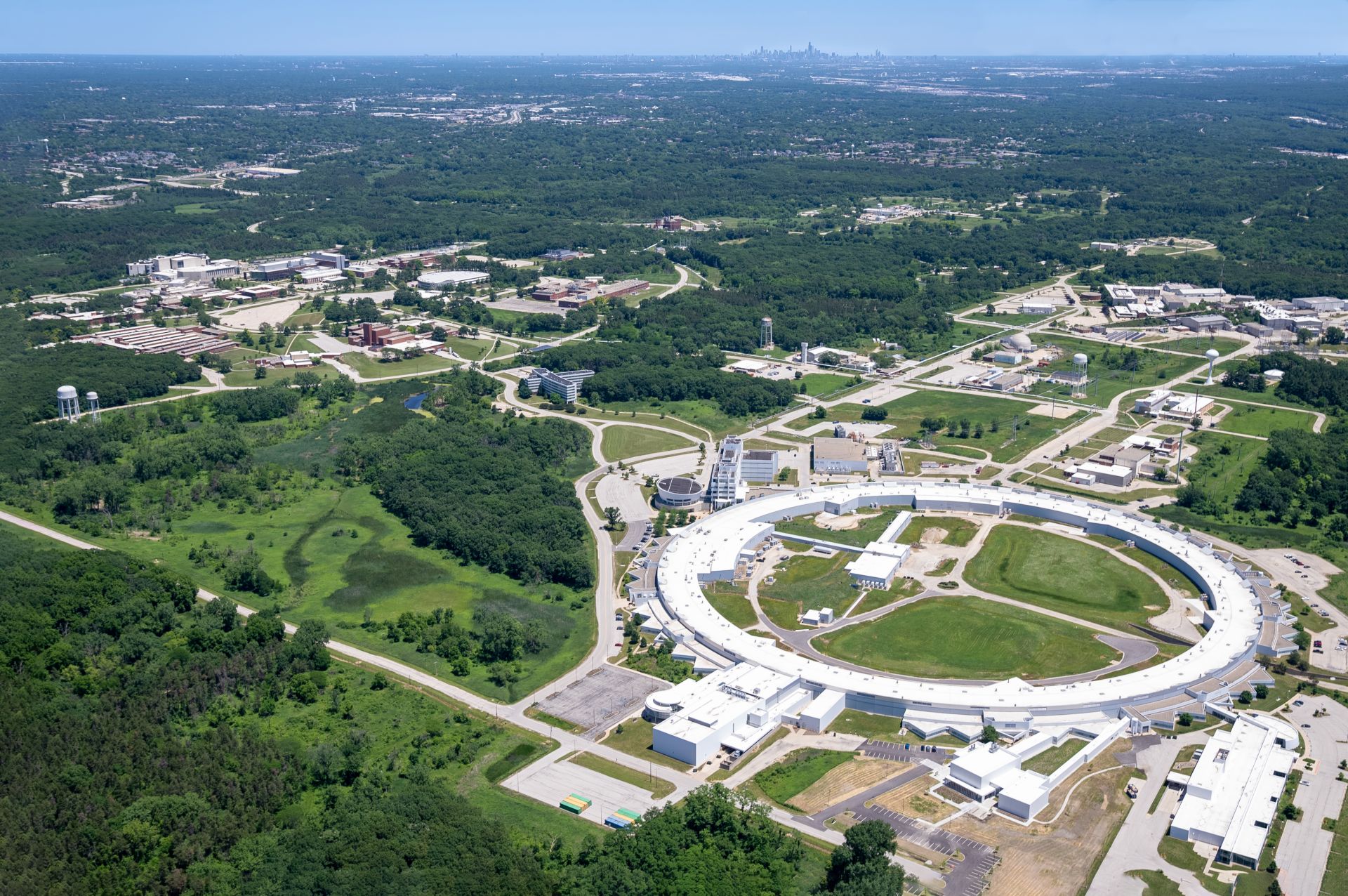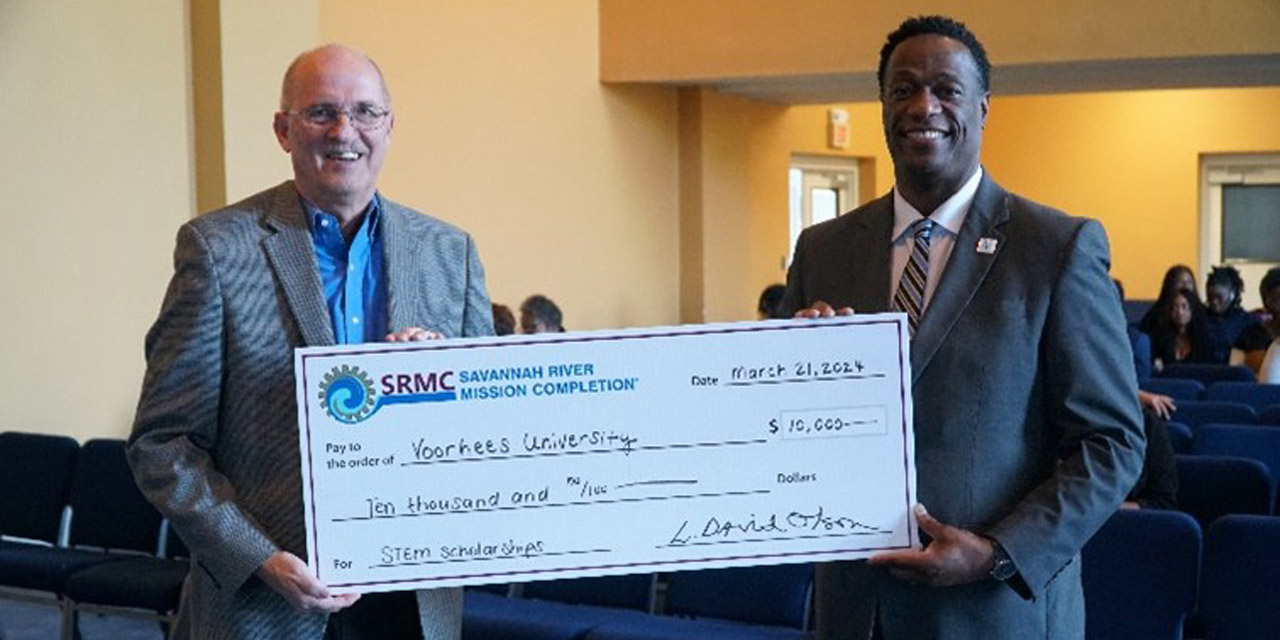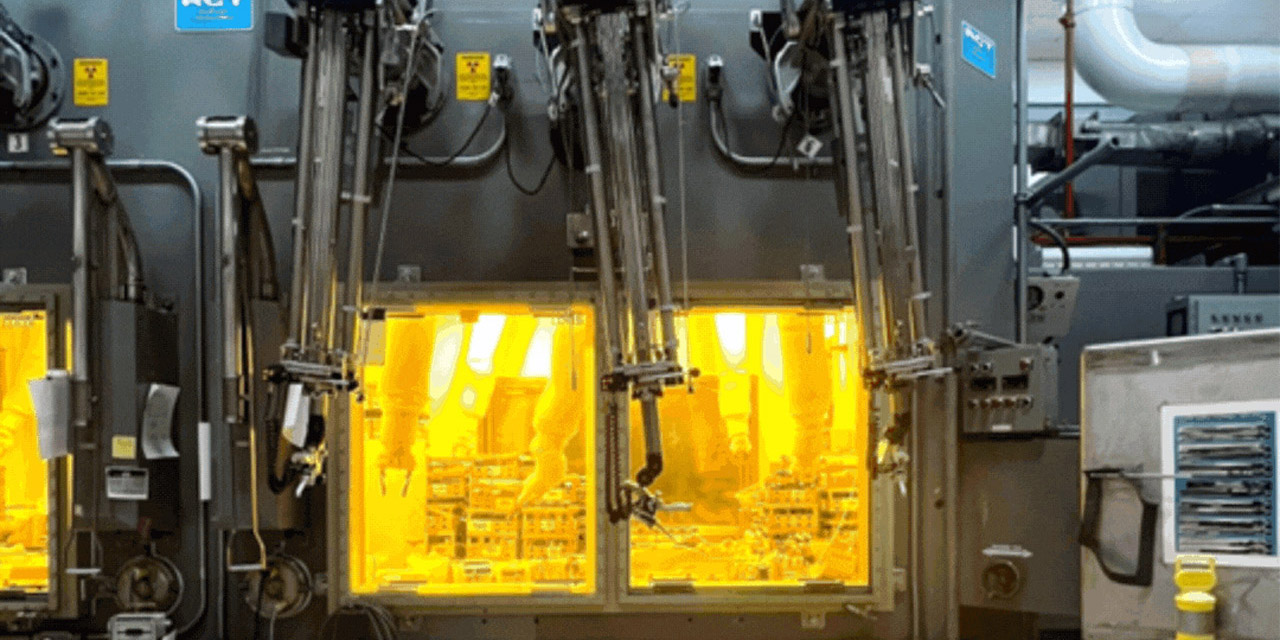A 125-foot-tall exhaust stack towers over the Safety Significant Confinement Ventilation System’s filter building at the Waste Isolation Pilot Plant. (Photo: DOE)
The Defense Nuclear Facilities Safety Board (DNFSB), an independent government organization responsible for overseeing public health and safety issues at Department of Energy defense nuclear facilities, has alerted the DOE because of safety concerns it has regarding the use of continuous air monitors (CAM) at the Waste Isolation Pilot Plant in New Mexico.
Part of WIPP’s new Safety Significant Confinement Ventilation System (SSCVS), the CAM system is intended to detect a radiological release in the repository and automatically close vent dampers to prevent the escape of radioactive particles to the outside environment. The SSCVS, which began commissioning in November 2023, is intended to increase airflow to the underground to allow for simultaneous underground waste emplacement, mining, and ground control work.
An engineer adjusts mirrors while installing new diagnostic equipment inside the DIII-D tokamak. (Photo: General Atomics)
The DIII-D National Fusion Facility is starting up after an eight-month experimental hiatus, equipped with new and improved plasma control and diagnostic systems. The upgrades will help researchers from around the nation and the world resolve key physics questions to bridge the gap between current magnetic confinement fusion research and the first fusion power pilot plants. General Atomics, which operates DIII-D for the Department of Energy, announced the completion of upgrades on May 8.
ORNL’s High Flux Isotope Reactor, where Sr-89 and other radioisotopes are produced, photographed during a 2015 refueling. (Photo: ORNL)
The Department of Energy’s Isotope Program (DOE IP) announced last week that it would end its “active standby” capability for strontium-82 production about two decades after beginning production of the isotope for cardiac diagnostic imaging. The DOE IP is celebrating commercialization of the Sr-82 supply chain as “a success story for both industry and the DOE IP.” Now that the Sr-82 market is commercially viable, the DOE IP and its National Isotope Development Center can “reassign those dedicated radioisotope production capacities to other mission needs”—including Sr-89.
An aerial view of the Hanford Site’s 200 Area and the Waste Treatment and Immobilization Plant, also known as the Vit Plant. (Photo: DOE)
The U.S. Department of Energy, Washington State Department of Ecology, and U.S. Environmental Protection Agency have reached an agreement on revised plans for managing millions of gallons of radioactive and chemical liquid waste stored in 177 underground tanks at the Hanford Site near Richland, Wash.
The Waste Isolation Pilot Plant. (Photo: DOE)
SDU 9 is the latest megavolume disposal unit completed at SRS. (Photo: DOE)
The Waste Isolation Pilot Plant, near Carlsbad, N.M. (Photo: DOE)
The Department of Energy’s Office of Environmental Management has issued a request for qualifications for interested parties and prospective offerors looking to enter into a realty agreement for carbon-pollution-free electricity (CFE) projects at the department’s Waste Isolation Pilot Plant site in southeastern New Mexico.
Virtual option available
Palisades nuclear power plant. (Photo: NRECA)
Nuclear Regulatory Commission staff will host a public information meeting on Wednesday, April 17, to discuss plans for repowering the shuttered Palisades nuclear plant in Michigan.
The DOE’s Argonne National Laboratory in Lemont, Ill. (Photo: DOE)
Researchers at the Department of Energy’s Argonne National Laboratory are developing and deploying ARG-US (from the Greek Argus, meaning “Watchful Guardian”) remote monitoring systems technologies to enhance the safety, security, and safeguards (3S) of packages of nuclear and other radioactive material during storage, transportation, and disposal.
As part of its DUF6 conversion program, the DOE is shipping converted depleted uranium oxide to WCS for disposal.
The first major shipment of depleted uranium oxide for disposal departs the DOE’s Paducah Site in Kentucky in early 2023 for disposal at the WCS facility in Texas.
Last year in late August, 120 storage cylinders of depleted uranium oxide (DUOx) safely arrived by rail in West Texas, having been shipped from the Department of Energy’s Portsmouth Site in Ohio. It was the first such shipment of the stable crystalline powder from the Portsmouth Site and was another milestone in the DOE Office of Environmental Management’s (EM) efforts to ship DUOx for off-site disposal.
SRMC’s Dave Olson (left) presents a $10,000 check to Voorhees University president Ronnie Hopkins. (Photo: SRMS)
Savannah River Mission Completion (SRMC), the liquid waste contractor at the Department of Energy’s Savannah River Site, recently presented a $10,000 check to Voorhees University to fund science, technology, engineering, and math (STEM) scholarships.
Upgrades are under way at the Hanford Site's 222-S Laboratory, including replacing the Cold War-era windows in the labs hot cells. Photo: DOE)
John Hill, deputy director for science and technology at BNL, with Ruqaiyah Patel, deputy director of UKRI North America, at a recent reception held by UKRI's North America office to mark the funding of the EIC. (Photo: BNL)
The U.S. Department of Energy is constructing the Electron-Ion Collider (EIC) at Brookhaven National Laboratory to explore the boundaries of nuclear physics—both for the sake of science and to support diverse applications, including in nuclear medicine, radiation safety, and nuclear energy. The project, already supported by international collaborators in 40 countries, just secured a significant commitment from the United Kingdom.
The Palisades nuclear power plant in Covert Township, Mich.
The Department of Energy’s Loan Programs Office (LPO) today announced a conditional commitment of up to $1.52 billion for a loan guarantee to Holtec Palisades LLC to finance the restoration and resumption of service of the 800-MWe Palisades nuclear power plant in Covert Township, Mich.
